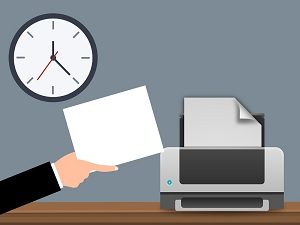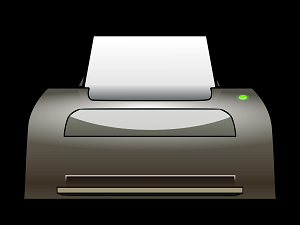3D Printing: Disrupting Traditional Manufacturing and Supply Chain Models
Running a business means navigating the complexities of the supply chain—sourcing raw materials, coordinating with manufacturers, managing logistics, and maintaining inventory. Traditionally, this process involves several steps before a product is ready for market. However, 3D printing, or additive manufacturing, is fundamentally changing these models by reducing reliance on external suppliers and enabling businesses to produce parts and products on demand.
This blog post aims to address the top frequently asked questions:
1. How can 3D printing help my business reduce costs?
2. Can 3D printing completely replace traditional manufacturing?
3. What materials can be used in 3D printing?
 For business owners, CEOs, and decision-makers, adopting 3D printing technology can offer a competitive advantage by streamlining processes, reducing costs, and making operations more agile. This article will explore the transformative effects of 3D printing on manufacturing and supply chain models, providing valuable insights for businesses looking to modernize their operations.
For business owners, CEOs, and decision-makers, adopting 3D printing technology can offer a competitive advantage by streamlining processes, reducing costs, and making operations more agile. This article will explore the transformative effects of 3D printing on manufacturing and supply chain models, providing valuable insights for businesses looking to modernize their operations.
Understanding 3D Printing Technology
At its core, 3D printing involves creating three-dimensional objects by layering materials based on a digital design file. Unlike traditional manufacturing, which often involves subtracting material to form a product, 3D printing adds material layer by layer, allowing for highly customizable and complex designs. This process can be used with various materials, including plastics, metals, resins, and even carbon composites.
The benefits of 3D printing extend beyond simple production. By enabling the on-demand creation of products, 3D printing reduces the need for large inventories and allows businesses to respond quickly to changes in demand or supply chain disruptions.
Key Features of 3D Printing:
- Customizable Designs: Easily create tailored products to meet specific customer requirements or prototype new ideas.
- Material Flexibility: Choose from a wide variety of materials to suit different applications, from durable metals to lightweight plastics.
- Precision and Complexity: 3D printing excels at producing highly intricate designs that traditional methods struggle to replicate.
How 3D Printing is Disrupting the Supply Chain
In the traditional supply chain model, businesses must rely on multiple suppliers to provide raw materials and parts. This dependency can lead to delays, increased costs, and inefficiencies—especially during disruptions like natural disasters, transportation issues, or material shortages. With 3D printing, many of these challenges can be mitigated.
1. Reducing Lead Times and Shipping Costs
One of the primary advantages of 3D printing is its ability to produce items in-house, eliminating the need to wait for materials or components from external suppliers. This not only cuts down on shipping time but also reduces the risk of supply chain delays due to transportation disruptions or lost shipments. In addition, businesses can reduce shipping costs by producing parts locally, further boosting operational efficiency.
2. Cost Savings in Manufacturing
According to research published by ScienceDirect, 3D printing is up to 61% more cost-effective compared to traditional manufacturing methods. This is largely due to reduced labor, transportation, and storage costs. When products are printed on demand, there is no need to pay for large quantities of raw materials, and businesses can avoid costs associated with excess inventory and warehousing.
Moreover, the flexibility of 3D printing allows businesses to produce prototypes quickly and affordably, reducing the financial risk of developing new products.
 3. Just-in-Time Manufacturing
3. Just-in-Time Manufacturing
In many industries, demand for certain products can fluctuate due to market trends, seasonal changes, or unexpected events. In these situations, maintaining an appropriate level of inventory can be challenging. With just-in-time manufacturing, businesses can use 3D printing to quickly produce items as needed, ensuring they meet customer demand without overstocking.
This agility is particularly beneficial during times of supply chain disruptions when traditional manufacturing processes might be slowed or halted. For example, businesses that experienced delays in obtaining parts during the COVID-19 pandemic could have benefited from having in-house 3D printing capabilities to fill the gaps.
The Role of 3D Printing in Inventory Management
Managing inventory efficiently is one of the most important aspects of maintaining a profitable business. Overstocking ties up capital, while understocking can lead to missed sales opportunities. 3D printing offers a solution to both challenges by minimizing the need for physical inventory.
1. On-Demand Production Reduces Overstocking
With 3D printing, businesses can produce items on demand, rather than maintaining a large inventory of parts or products. This minimizes the risk of overstocking, where products sit unused in storage and may eventually become obsolete or unwanted. The ability to print the exact quantity needed also prevents excess capital from being tied up in unsold goods.
 2. Minimized Risk of Obsolescence
2. Minimized Risk of Obsolescence
Products or parts that become outdated or irrelevant can be a significant loss for businesses. 3D printing mitigates this risk by enabling companies to produce items as needed, rather than manufacturing large quantities upfront. This flexibility allows businesses to adapt quickly to changes in market demand or technological advancements.
Additionally, filament fabrication technology in 3D printing can even be used to produce metal parts, expanding its applicability across industries.
The Environmental Impact of 3D Printing
In addition to the operational and financial benefits, 3D printing can contribute to sustainability efforts by reducing waste and lowering the carbon footprint of production. Traditional manufacturing methods often result in significant waste, as excess material is cut away or discarded during the production process. In contrast, additive manufacturing produces far less waste since it only uses the material required to build each layer of the product.
Moreover, by localizing production through 3D printing, businesses can reduce the need for long-distance transportation of goods, lowering greenhouse gas emissions associated with shipping.
 Embracing 3D Printing for Future Business Growth
Embracing 3D Printing for Future Business Growth
As the business landscape continues to evolve, 3D printing presents an opportunity for companies to stay competitive by streamlining operations, reducing costs, and increasing flexibility. For decision-makers, adopting 3D printing technology means gaining greater control over the manufacturing process, reducing reliance on external suppliers, and being better positioned to respond to market fluctuations.
Businesses that integrate 3D printing into their operations will likely benefit from faster production times, lower costs, and a more sustainable and agile business model. Whether you're creating prototypes, custom products, or filling gaps in the supply chain, 3D printing offers a powerful solution for businesses of all sizes.
Top Three FAQs About 3D Printing for Businesses Answered
1. How can 3D printing help my business reduce costs?
3D printing reduces costs in several ways. It eliminates the need for large inventories, reduces lead times, and cuts down on transportation and shipping expenses. Additionally, it allows businesses to produce prototypes affordably and quickly, reducing the financial risk of developing new products.2. Can 3D printing completely replace traditional manufacturing?
While 3D printing offers significant advantages in terms of customization, cost savings, and agility, it may not completely replace traditional manufacturing in all industries. For large-scale production, traditional methods may still be more efficient. However, 3D printing is an excellent complement for producing specialized parts, prototypes, and on-demand products.3. What materials can be used in 3D printing?
3D printers can use a variety of materials, including plastics, metals, resins, carbon composites, and even biodegradable materials. The choice of material depends on the intended application and the type of 3D printer being used. Metal 3D printing, for example, is commonly used in industries like aerospace and automotive.
By embracing 3D printing, businesses can unlock new efficiencies, reduce costs, and become more resilient in the face of supply chain disruptions. Whether for prototyping, just-in-time production, or reducing inventory risks, 3D printing is a disruptive technology that offers immense value to companies looking to stay ahead of the competition.
